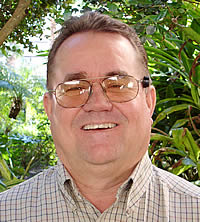Applying Infrared Imaging Techniques to Marine Surveying
John (Jack) N. Allinson, II BS
SAMS® Accredited Marine Surveyor AMS®, Level 1 Certified Infrared Thermographer
J.N. Allinson Associates, Inc.
222 University Blvd. North #2, Jacksonville, FL 32211
904-721-2177
Abstract
Marine surveyors are to the marine industry as building and home inspectors are to the commercial and residential real estate industry. A marine surveyor’s opinions are relied upon to document the condition and value of the vessels (boats, ships) they inspect. A marine surveyor examining a vessel relies heavily upon experience and what can be seen, heard, and felt. Traditionally, visual anomalies seen with the unaided eye often are the sole basis for further testing. Infrared images are an effective tool in extending a marine surveyor’s ability to detect anomalies. This paper will review common deficiencies found in vessels and show how infrared imaging has become an effective tool in documenting the problems found during inspections.
Introduction
Common to all marine surveys are deliverables that provide a:
-
Detailed and accurate description of the vessel
- “Condition and Value” of a vessel
-
List of findings and recommendations
Typically, the “Condition” of a vessel is based upon its structural integrity and how the onboard systems function. Inherent in the “Condition” are generally accepted terms that reflect whether a boat is ready for sale or whether it requires additional work. Similar to the real estate industry, the “Value” of a vessel is based upon recent sales comparables and income earning potential of the vessel.
When vessels are inspected, they are looked at with respect to the mandatory standards promulgated by the United States Coast Guard (USCG), under the authority of Title 46 United States Code (USC); Title 33 and Title 46, Code of Federal Regulations (CFR), and the voluntary standards and recommended practices developed by the American Boat and Yacht Council (ABYC) and the National Fire Protection Association (NFPA).
Two business segments are typically served:
-
Commercial – Tugboats, Passenger Vessels, Shipping, and Fisheries
-
Recreational – Yachts and Small Craft
Within each business segment, types of inspections can be broken down into:
-
Prepurchase – requested by buyer when purchasing a new or used vessel
-
Seller – requested to help prepare for the sale of a vessel
-
Insurance – required by an underwriter(s) to determine if vessel is an acceptable risk
-
Appraisal – required by a lending institution, or legally for estate settlements and donations
-
Damage – required to settle an insurance claim or for legal action
Examples of Infrared Applications
Electrical
Direct Current (DC) systems
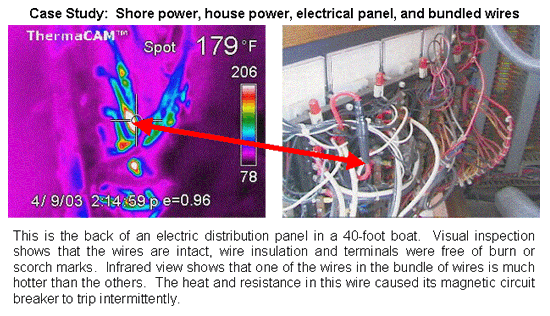
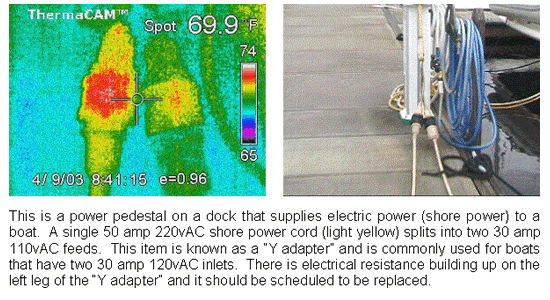

Boat Fires at Dockside
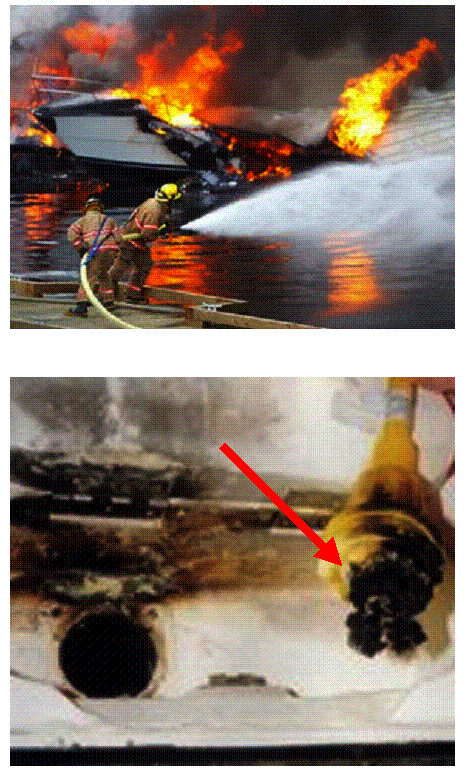
Mechanical
Bearings
Gears
Refrigeration



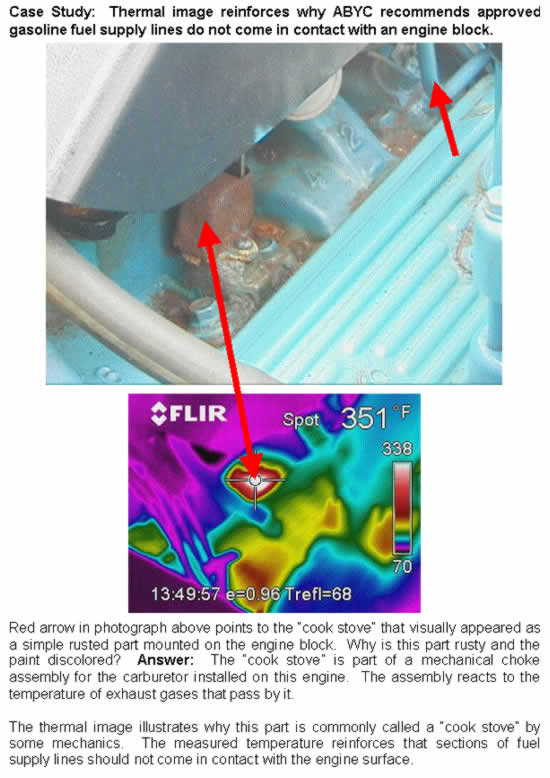
Vessel Construction and Materials
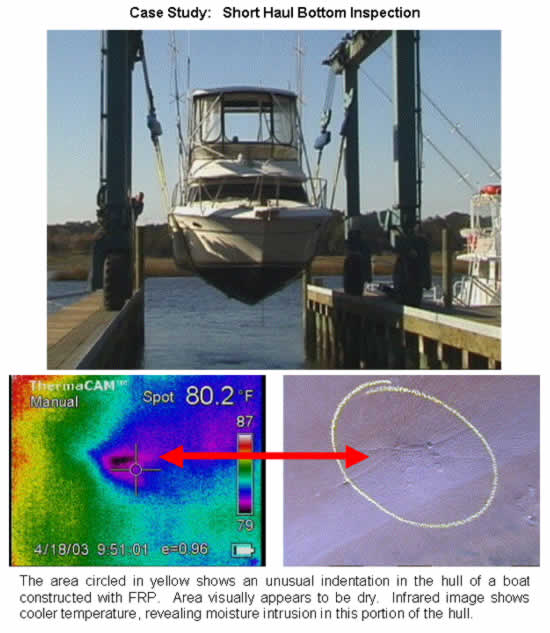
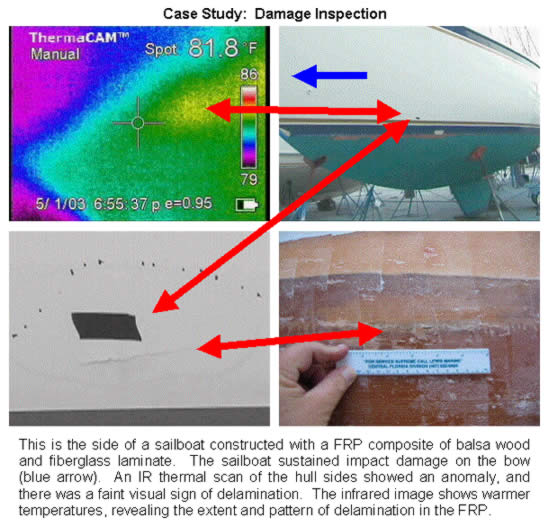
Wooden Boat Hulls
Moisture Accumulation
Wood Rot
Mechanical Fasteners
Composites
Delamination
Moisture Accumulation
Disbonding
Other materials that lend themselves to IR imaging
Carbon fiber used to construct sailboat masts, booms, arches, and hulls
Shows fractures from point source loading
Metal, Aluminum and Steel
Moisture accumulation in select areas in the hull interior
Concrete (ferro cement)
Moisture accumulation
Disbonding between cement and wire reinforcement
Locate metal reinforcement
Summary
Infrared imaging is clearly a valuable tool for a Marine Surveyor. Like other investigative tools, it should not be used as the “sole source” for confirming a problem. A surveyor’s experience and knowledge of how a boat’s systems function, the construction methods used, and use of other supporting investigative tools are essential to the accurate interpretation of what the infrared images show.
References
72 COLREGS – International Regulations for Preventing Collisions at Sea and/or the Navigation Rules: International – Inland – Obtain the Navigation Rules from the Superintendent of Documents, United States Government Information, POB 371954, Pittsburgh, PA 15250-7954
ABYC – American Boat & Yacht Council, July 2005, ”Standards for and Technical Information Reports for Small Craft”, 3069 Solomon’s Island Road, Edgewater, MD 21037-1416
Allinson, II, John (Jack) N.; “Infrared Thermography in Marine Surveying”, Technical Information Exchange for Marine Professionals, Vol. 19, No. 2, pp. 4 & 12
Allinson, II, John (Jack) N., J.N. Allinson Associates, Inc.; “Applying Infrared Imaging Techniques to Marine Surveying” InfraMation 2003 Proceedings, September 2003, Volume 4, pp. 1-6
Allinson, II, John (Jack) N., J.N. Allinson Associates, Inc., “Applying Infrared Imaging Techniques to Marine Surveying…continued”, InfraMation 2004 Proceedings, October 2004 Volume 5, pp. 83-90
Allinson, II, John (Jack) N., Allinson Infrared Inspection Services (AIRIS), Inc., “Infrared Imaging and the Detection of Great White Sharks and Cape Fur Seals”, InfraMation 2004 Proceedings, October 2004, Volume 5, pp. 83-90
CFR – Code of Federal Regulations and other government publications. Obtain from the Superintendent of Documents, United States Government Information, POB 371954, Pittsburgh, PA 15250-7954
NFPA – National Fire Protection Association, 1 Batterymarch Park, Quincy, MA 02269
USCG – United States Coast Guard, USCG Headquarters, Washington, DC, 25093
Various IR papers https://www.flir.com//US/
Advertisement

